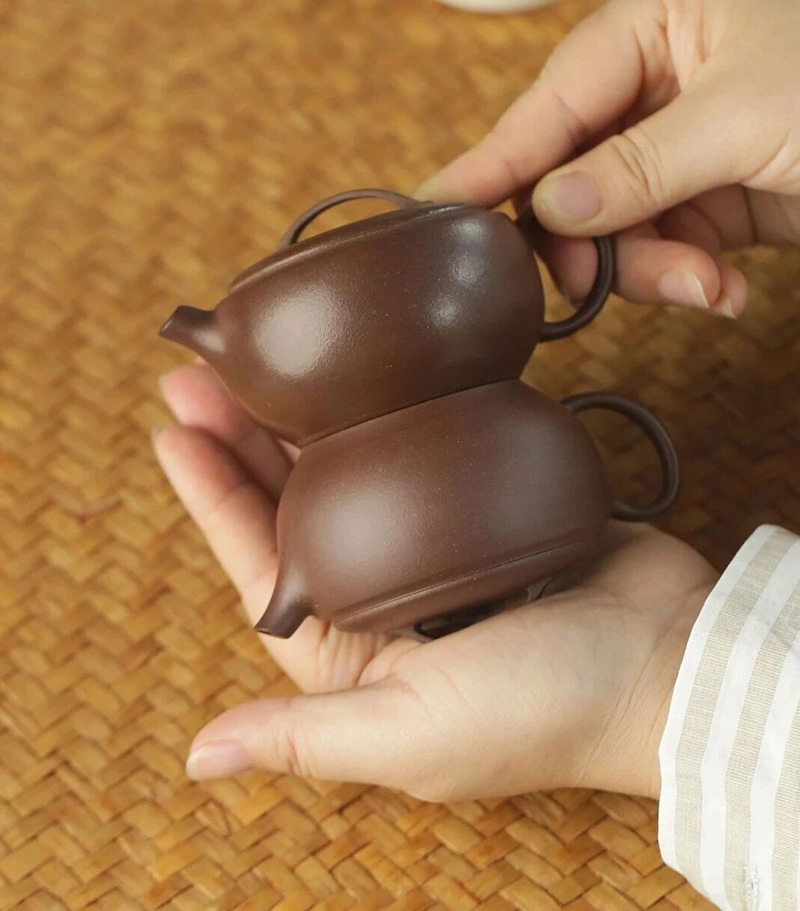Having been engaged in the purple clay industry for more than ten years, I receive daily questions from teapot enthusiasts, among which “can one purple clay teapot brew multiple types of tea” is one of the most common questions.
Today, I will discuss this topic with you from three dimensions: the characteristics of purple clay, the taste of tea soup, and the logic of pot cultivation.
1、 One pot doesn’t matter, two teas. “It’s not a rule, it’s a rule
Many teapot enthusiasts think that “one pot, one tea” is a tradition of the older generation, but behind it lies the physical characteristics of purple clay – the dual pore structure. When the purple clay pot is sintered at high temperature, minerals such as quartz and mica in the soil will shrink, forming a network of “closed pores” and “open pores” connected. This structure gives it both breathability and strong adsorption.
For example, a teapot enthusiast uses a teapot to brew oolong tea first, and then brews pu erh tea (with a thick and aged aroma) two days later. As a result, the pu erh tea brewed always carries a hint of oolong bitterness, and the orchid fragrance of oolong tea mixes with the dull flavor of pu erh tea – this is because the pores absorb the aroma components of the previous tea, which superimposes with the taste of the new tea, causing the tea soup to be “chaotic” and unable to taste the original flavor of the tea.
The essence of ‘one pot doesn’t matter for two teas’ is to make the pores of the pot only absorb the flavor of the same type of tea, so that the brewed tea soup can maintain freshness and purity.
2. Hidden benefits: Cultivate a pot with memories
In addition to the taste of the tea soup, “one pot, one tea” is even more crucial for raising a teapot. The “patina” pursued by many teapot enthusiasts is not simply the accumulation of tea stains, but the substances such as tea polyphenols and amino acids in tea that penetrate into the pot body through pores and slowly precipitate with use, forming a warm and glossy appearance
If the same tea is brewed for a long time, these substances will adhere evenly, and the patina will be more uniform and textured:
- The pot used to brew black tea will gradually cultivate a warm red patina, exuding the warmth of black tea;
- The pot for making white tea has a light yellow patina, which is refreshing and clean, echoing the freshness and richness of white tea;
- The pot used to brew ripe Pu erh tea has a dark brown patina, giving it a heavy and aged tea like texture.
But if mixed, the substances of different teas will “fight” in the pores, and the patina will appear messy, even with local blackening and blooming, which will waste a good pot.
3. There is only one purple clay teapot, a way to change tea
Of course, not every teapot enthusiast can achieve “one teapot, one tea”. If you only have one teapot and want to switch to a different tea, you must follow the steps of “reopening the teapot” to completely remove any residual flavors,
Here is a reminder: it is not recommended to change tea frequently (such as changing 2-3 types per week), even if the pot is reopened every time, the trace residues in the pores are difficult to completely remove, which will affect the adsorption of the pot in the long run.
Many teapot enthusiasts were eager to brew all the tea in one pot at first, but gradually realized that good purple clay, like tea, requires “devotion”. Focusing on brewing one type of tea in a pot, over time, you will find that the breathability of the pot becomes increasingly compatible with the characteristics of the tea – when brewing aged tea, the pot can better stimulate the aged aroma; When brewing new tea, it can also lock in freshness and freshness.
If conditions permit, why not pair each commonly consumed tea with a pot, slowly cultivate and savor it, and you will reap more precious pleasure than tea soup.
Post time: Oct-23-2025







